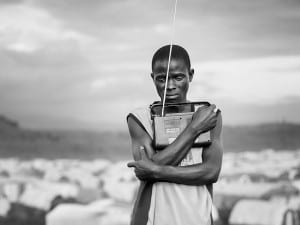The Chicano Movement, or “El Movimento”, is less well known outside of the United States than the struggle for African–American Civil Rights, but it nonetheless represented a significant force for Mexican–American empowerment and wider social justice at a time of great oppression and unrest. First published in Los Angeles in 1967 – and for ten years after –the Chicano newspaper-turned-magazine La Raza became instrumental in documenting the activities and politics of the aforementioned movement, but also participated in it by presenting its politically conscious readership with a groundbreaking amalgamation of photojournalism, art, poetry, satire and political commentary.
Opening as part of Pacific Standard Time: LA/LA –a Getty-led exploration of Latin American and Latino art in relation to the city of Los Angeles spread across over 70 cultural institutions in Southern California –The Autry Museum of the American West is mounting a new exhibition dedicated to the activities and archives of La Raza. Focusing on 200 images from a previously inaccessible archive of more than 25,000, the exhibition does not simply provide visual documentation, but a powerful argument for equal rights through a nuanced and inherently political portrait of the Mexican–American community as resilient and empowered, often in opposition to their more officially powerful antagonists.The exhibition begins with a slideshow that introduces visitors to the visual language of the Chicano movement before focusing on portraits of the photographers, highlighting their role as both activists and artists.
The rest of the show explores several major themes in the history of both the movement and the magazine. Iconic images depicting organised marches, manifestations and moratoria are juxtaposed with those of combat-ready police, reframing erroneous media narratives and representations of Latin Americans as criminals and gangsters that persist in the western political landscape today. Intimate portrayals of the associated communities, as well as images showing the injuries they suffered physically at the hands of the state, further attest to the human complexity of the times in which they lived. Finally, space in the show is also given to the attention that La Raza photographers paid to the signage, graffiti and other political semiotics that characterised the struggle, providing insights not just into the collective’s activities, but also the spaces they inhabited and recreated.
La Raza opens 16 September at The Autry Museum of the American West. For more information: www.theautry.org
Ned Carter Miles
Credits:
1.LA RAZA. STAFF. 1971: Los Angeles County Sheriff formation at Marcha Por La Justicia demonstration on Whittier Blvd. East Los Angeles. c. January 31, 1971. La Raza Newspaper & Magazine Records. Courtesy of the UCLA Chicano Studies Research Center.
2.LA RAZA. Zapata. 1971: Photograph by Daniel Zapata. Young families join La Marcha de la Reconquista along a dusty highway through the farm land of Southern California. 1971. La Raza Newspaper & Magazine Records. Courtesy of the photographer and the UCLA Chicano Studies Research Center © Daniel Zapata.
3.LA RAZA.Garza.1971: Photograph by Luis Garza. Student and barrio youth lead protest march, La Marcha por La Justicia, Belvedere Park. January 31, 1971. La Raza Newspaper & Magazine Records. Courtesy of the photographer and the UCLA Chicano Studies Research Center © Luis C. Garza.




